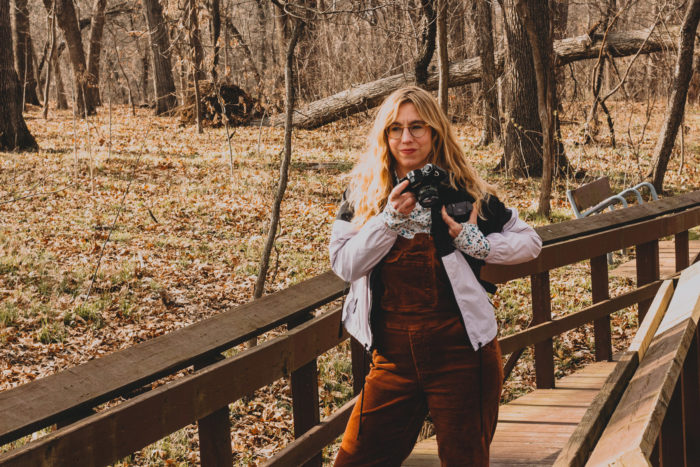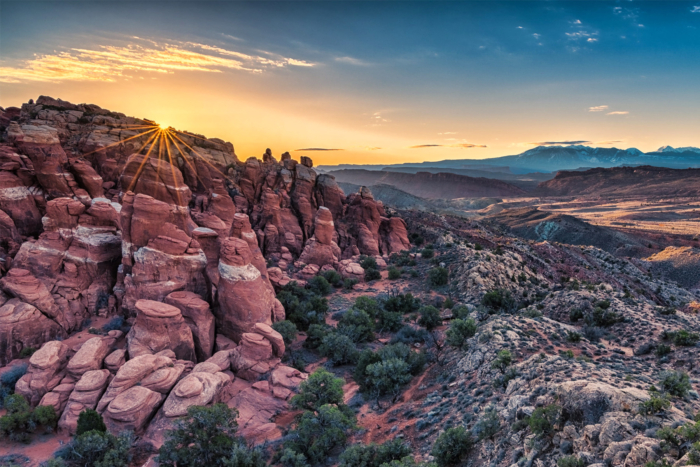Those of us who like to take photos in the woods, whether professional or amateur, often carry bulky gear and DSLRs. That means choosing between carrying the weight in your hands or around your neck. Or you can let it ride comfortably in your backpack — only to miss a scenic nature shot as you struggle to dig it out.
Even if you upgrade to mirrorless, many quality cameras are only getting heavier. (My new Canon EOS R6 is a whopping 23.99 ounces compared to the 7.23 ounces of my old Canon T5i.)
For years, I would let my camera flop around my neck for a few miles before tucking it in my bag, only to spot a rare bird moments later. Nature photography on the go felt impossible to me, and I didn’t possess the patience of birders who set up and waited half a day in the perfect spot.
The first time I heard of the Peak Design clip, I ordered it the same day. Admittedly, I found it thanks to the YouTube channel of one of my favorite travel photographers. Now it’s my number one accessory that I don’t adventure without.
In short: From the backwoods to traveling overseas, the Capture Clip lets me access my camera when I need it while remaining agile on the trail. I can attach it to a backpack strap, a belt, a personal flotation device (PDF), or anything else that has secure straps. When a picturesque moment happens or an animal reveals itself, I can grab my camera quickly and snap a few shots. Then I simply clip it back to my person and continue along my merry way.
This device solves the biggest problem photographers (both pro and amateur) struggle with. It has some small drawbacks — it doesn’t play nicely with telephoto lenses, and sometimes the clip gets stuck. But by and large, this is one of the handiest accessories I hike, camp, backpack, or kayak with.
- Clip weight: 70 g (2.5 oz.)
- Plate weight: 14 g (0.5 oz.)
- Total weight: 84 g (3 oz.)
- Clip Size: 3.3" x 1.6" x 0.79"
- Plate Size: 1.5" x 1.5" x 0.3"
- Materials: CNC-machined aluminum, black anodized finish, injection molded PVC pad, steel screws with oxide finish (hex drive bolts) and machined steel and aluminum assembled screws with anodized finish (hand drive bolts)
- Strength rating: Can withstand well over 200 lbs. (90 kg)
Pros
- Keeps your camera close at hand and at the ready
- Can hold any size of camera
- Isn't bulky or overly heavy
Cons
- The plate gets stuck in the clip semi-regularly
- Doesn't work well with telephoto lenses
Peak Design Capture Clip Review
Look, Ma! No Hands
Trekking poles. A dog leash. Water bottles. Maps. Clif bars. Oh my! I don’t know about you, but sometimes when hiking, I juggle a lot of stuff. And usually, I can’t afford to add a camera to the mix, despite my love of taking photos.
For my camera, that means riding around my neck, bouncing up and down painfully as I scramble over boulders or rough terrain. I have destroyed my neck this way on countless trips, just to wake up nearly immobile the next day. It’s either that or the camera gets put away. And when a camera gets put away on a backpacking trip, it rarely makes it back out, especially not for anything timely or exciting.
After one trip where I spent three days carrying my bulky camera gear tucked in my bag through the backwoods only to pull it out for maybe five shots, I mostly just stopped taking it. But now it comes along on every trip.

The Peak Design Capture Clip has just two parts. A plate screws into the bottom of the camera where the tripod mount attaches. Then the clip is attached to a bag or belt of your choice. Once attached, your camera slides easily into the clip and is secured. A release button on the clip allows it to slide back out.
This simple design means your camera can be carried on the front of your pack and be out in your hands at a moment’s notice while still having functional use of your hands for the rest of the trail. It can be easily unscrewed to attach to any bag strap or even a PFD.

Not Just for Trails
The Capture Clip isn’t just my favorite trail accessory. I also love it as a kayaking accessory. I can attach my camera safely to my person instead of in the damp boat bottom or tucked into a dry bag out of reach. There’s always an inherent risk of taking a camera on board, but firmly attaching it to my PFD means it only goes down if I do (a risk I feel secure taking).
Since picking my Capture Clip up, I’ve caught cranes flying, marmots out of the corner of my eye, a black bear, buffalo, and countless birds. But mostly, I take more pictures in general — of my dog, my partner, and my friends because it’s convenient instead of being a chore.

Quick on the Draw? Not Always
The compact design doesn’t come without its drawbacks (in the literal sense). If you imagine the Capture Clip as an Old West gun holster and yourself getting ready for a shootout, you may not like your odds of ending up on the wrong end of the draw.
In my version of the Capture Clip from 2020, the plate tends to get stuck in the clip a fair amount of the time. It also sometimes catches when I’m trying to slide it back in. It’s an irritation that becomes more pronounced with bigger lenses.

Speaking of lenses, the other less-than-ideal factor is that the clip doesn’t work that well with a telephoto lens. The clip is sturdy enough to hold, but remember the scenario of bulky camera parts jiggling around your neck we were trying to avoid? With a large lens, that’s happening in a new way.
The problem is probably unavoidable. But for birding in particular, it means you’re likely back to digging around in the camera bag to swap lenses.
The camera becomes top-heavy on the clip, too. I’ve accidentally set down my bag with it attached, only for the lens to smash into the ground more times than I’d care to admit. It just requires an extra level of care and attention to avoid.

The Go-To for On-the-Go
Despite the slight shortcomings, this clip has become an accessory I don’t hike or travel without. The clip moves easily between bags and can fit on everything from my backpacking pack to my fanny pack.
The plate itself moves less easily between cameras. An Allen key firmly secures it to the camera. But it takes time to swap the Capture Clip plate for a tripod plate. To answer this, Peak Design now sells the plates and clips separately. However, since I rarely take my tripod out, the plate stays on my camera at all times. The plate also attaches to their other products for convenience, including the pretty revolutionary new travel tripod design.
Peak Design Capture Clip: Conclusion

If you’re looking for a way to square your hobby photography ambitions with rugged trails and travel, Peak Design has solved your number one problem. Now your biggest issue will be finding time to edit all the photos you’ll be capturing in the woods.
It’s an exciting feeling when you find a piece of gear that solves the exact problem you’ve been struggling with on the trail. I missed a lot of photo ops before I bought the Peak Design Capture Clip. Now, though, I’m always ready — whether I’m hiking, camping, backpacking, or kayaking.










